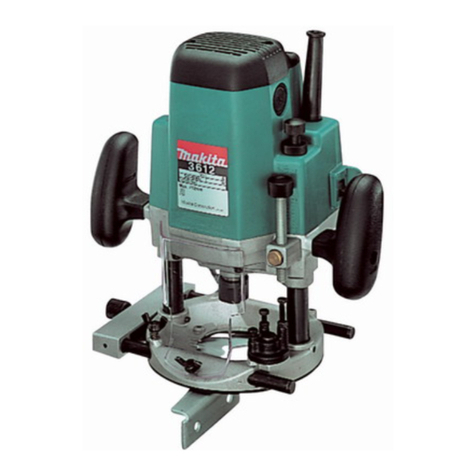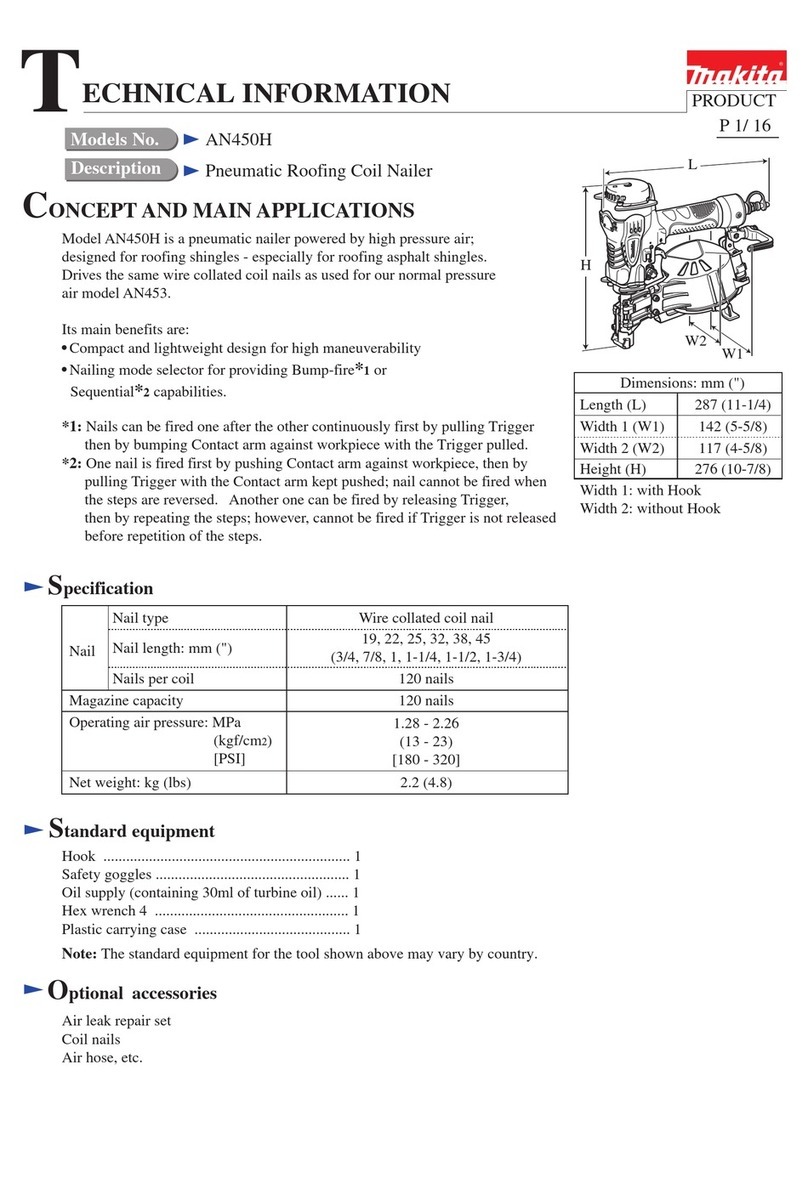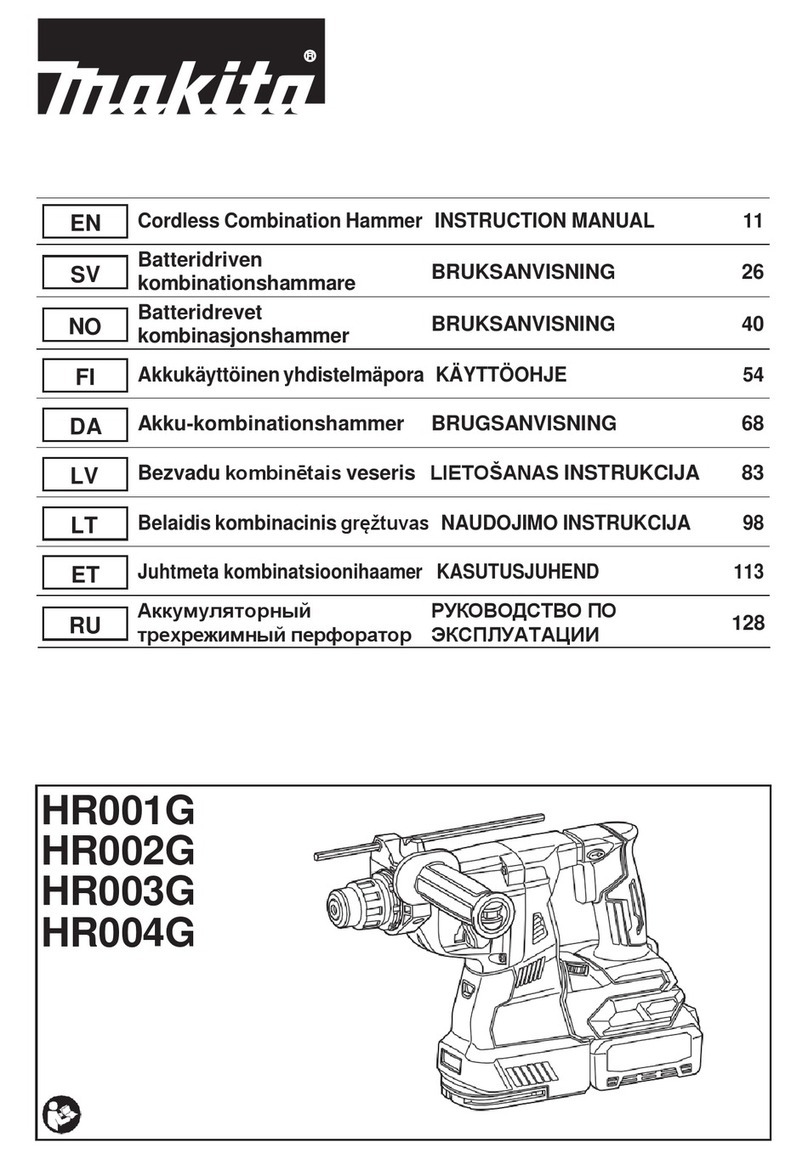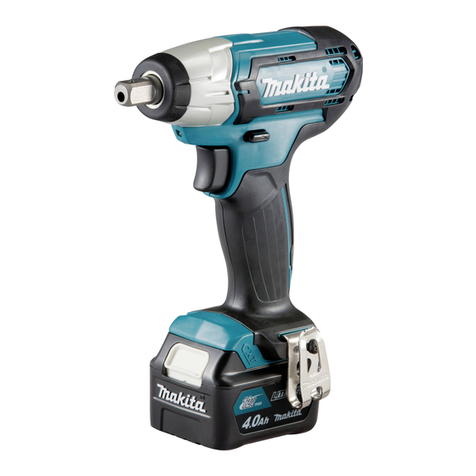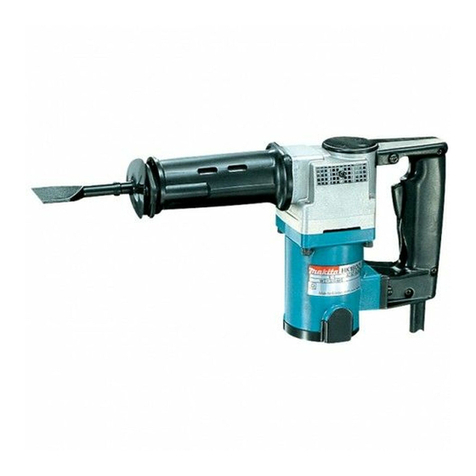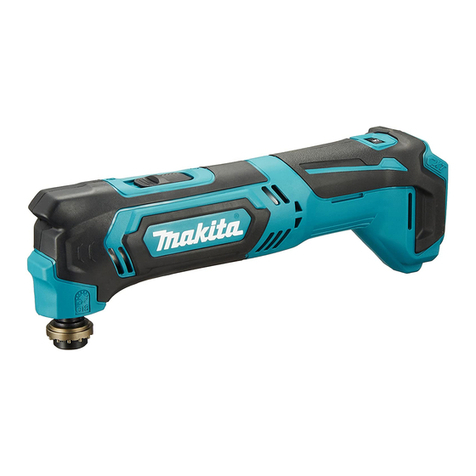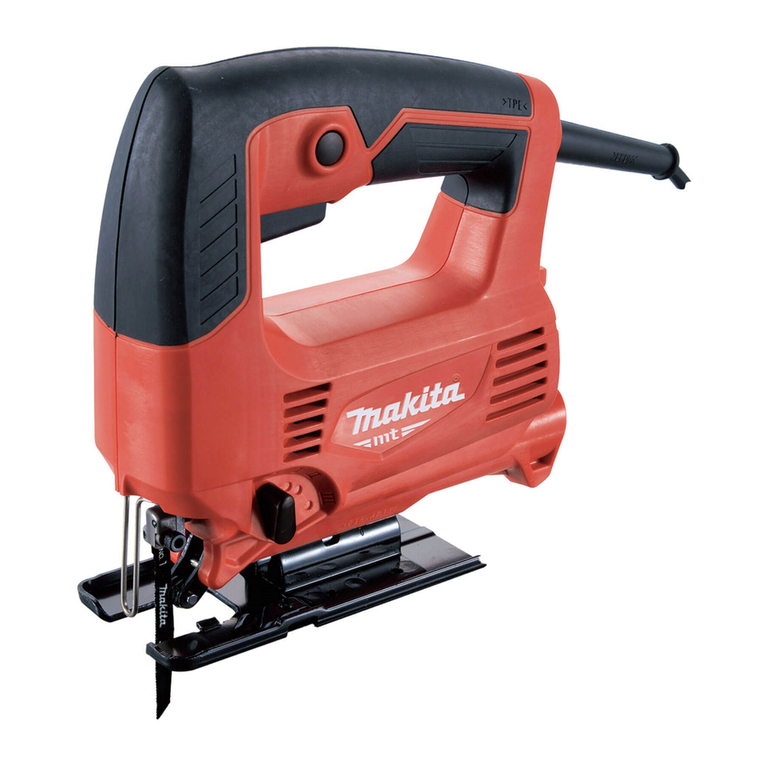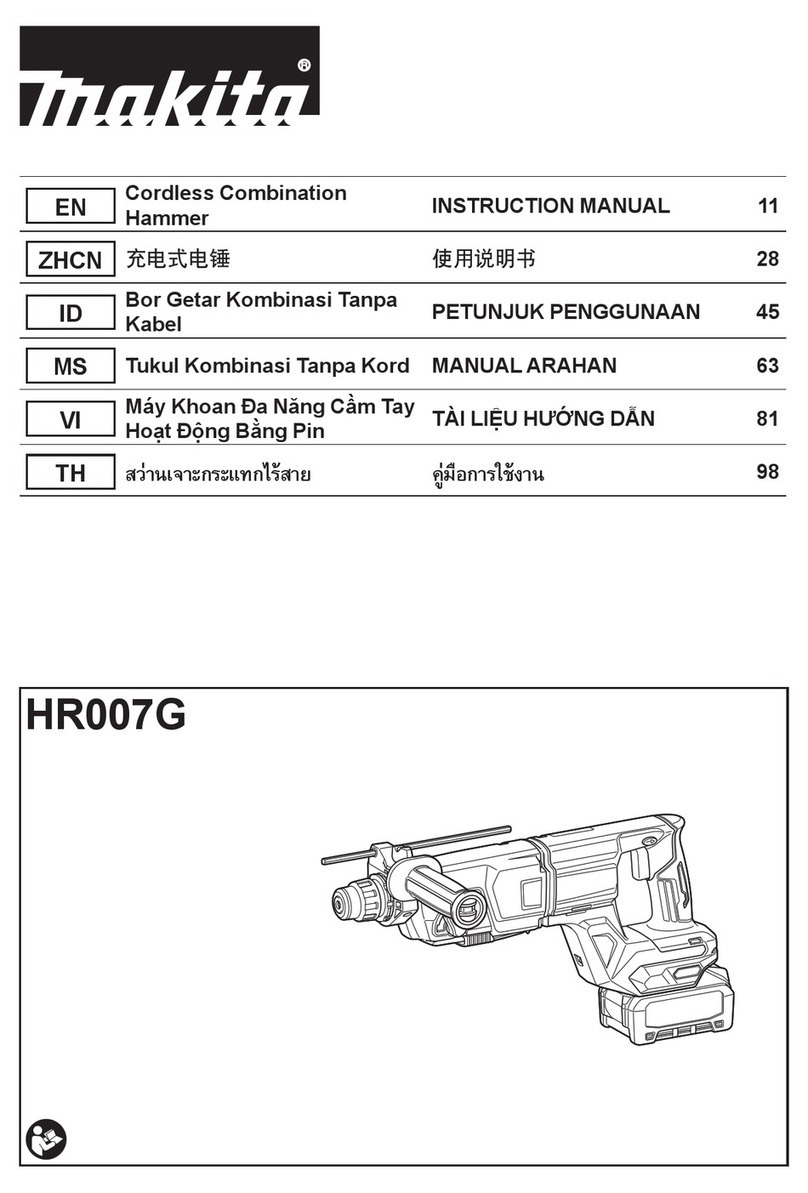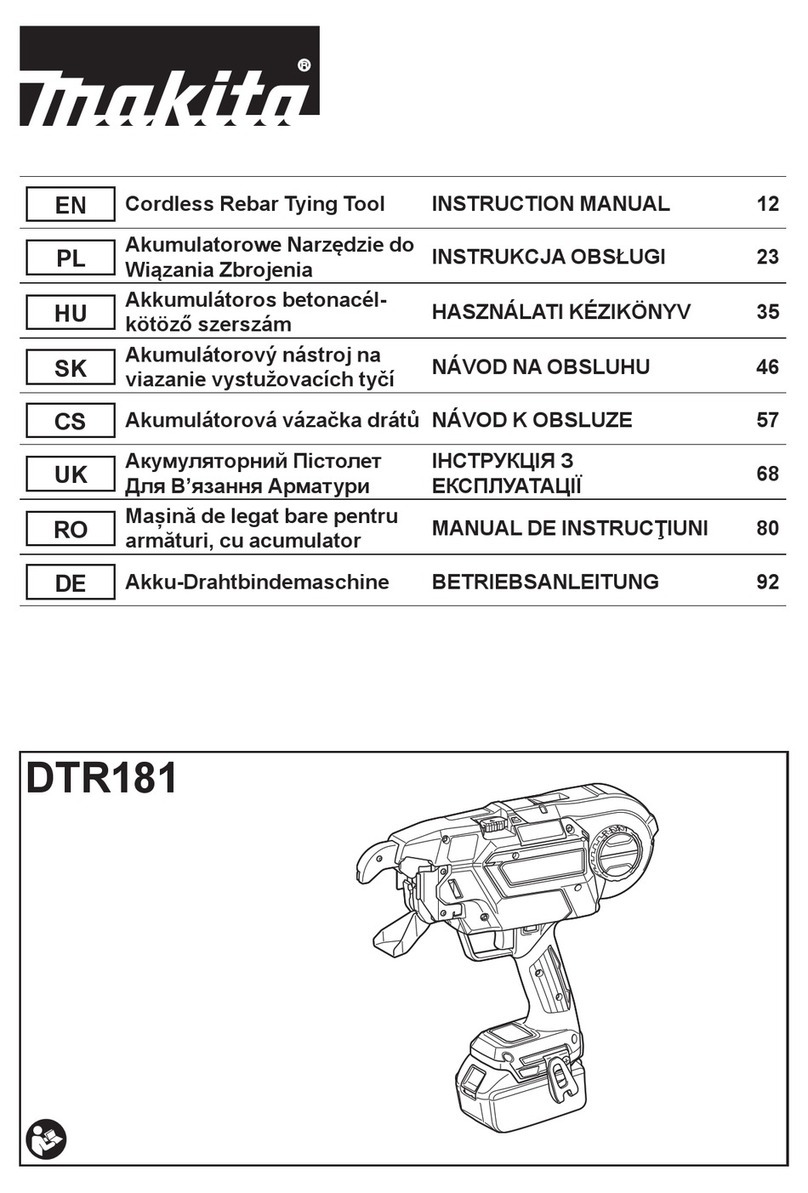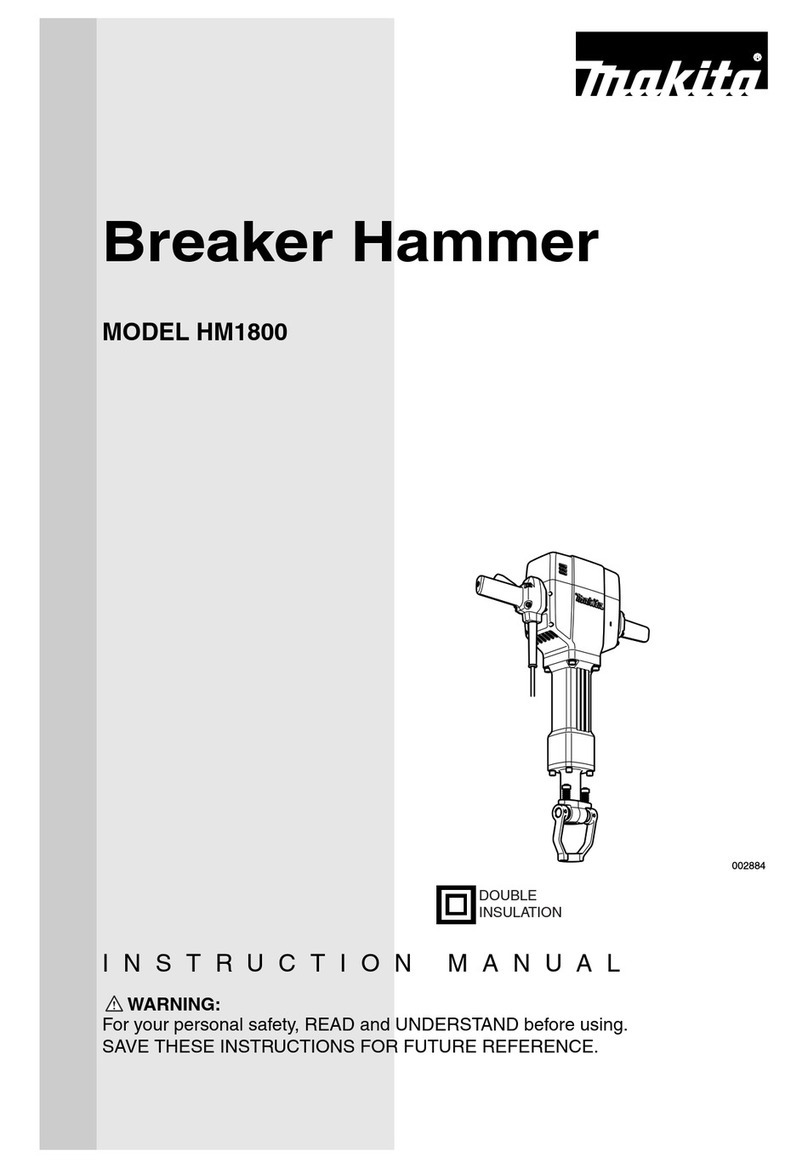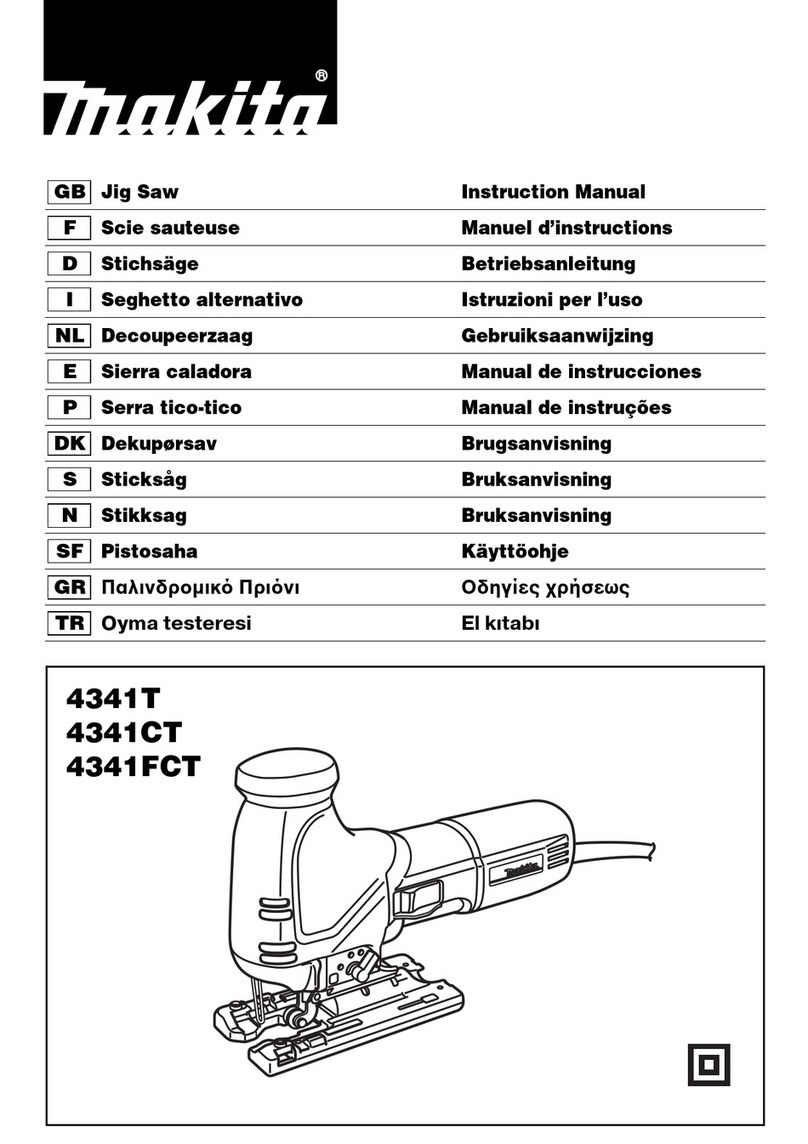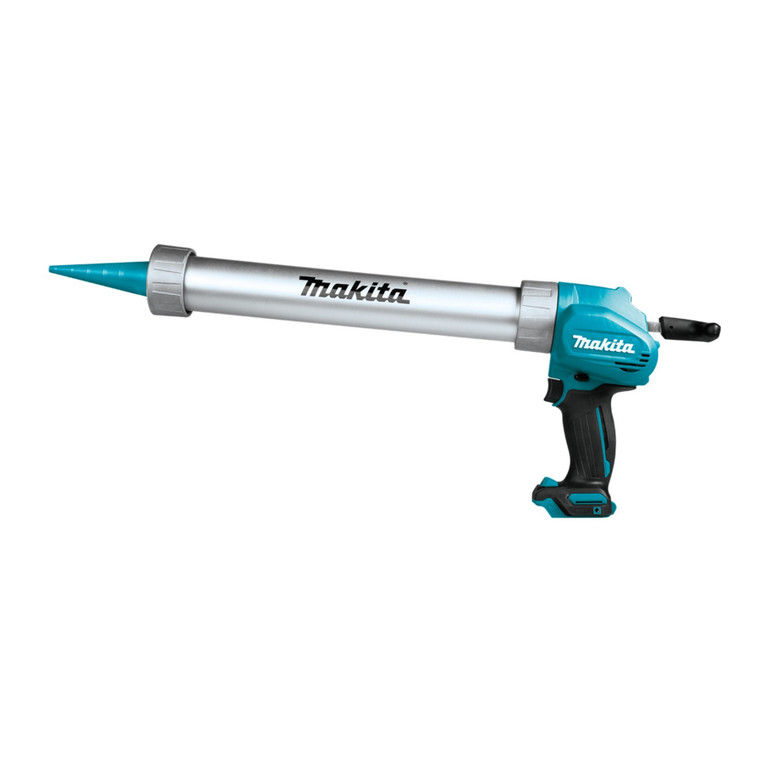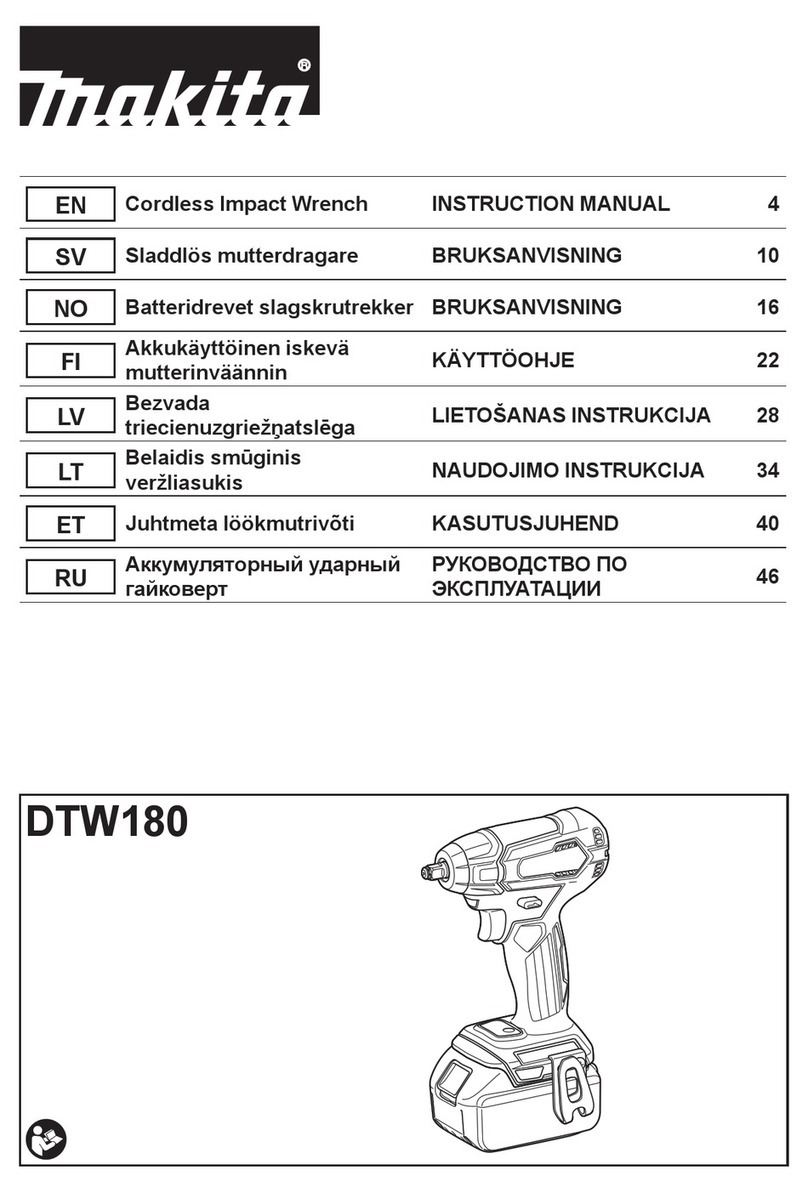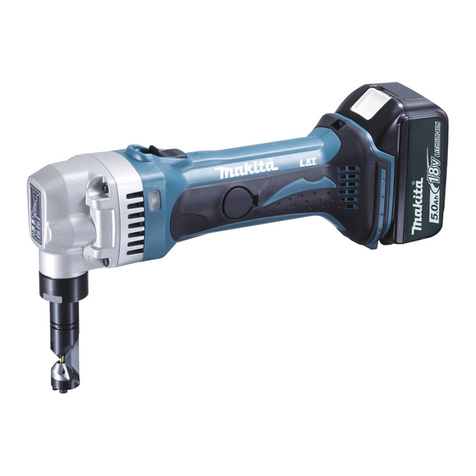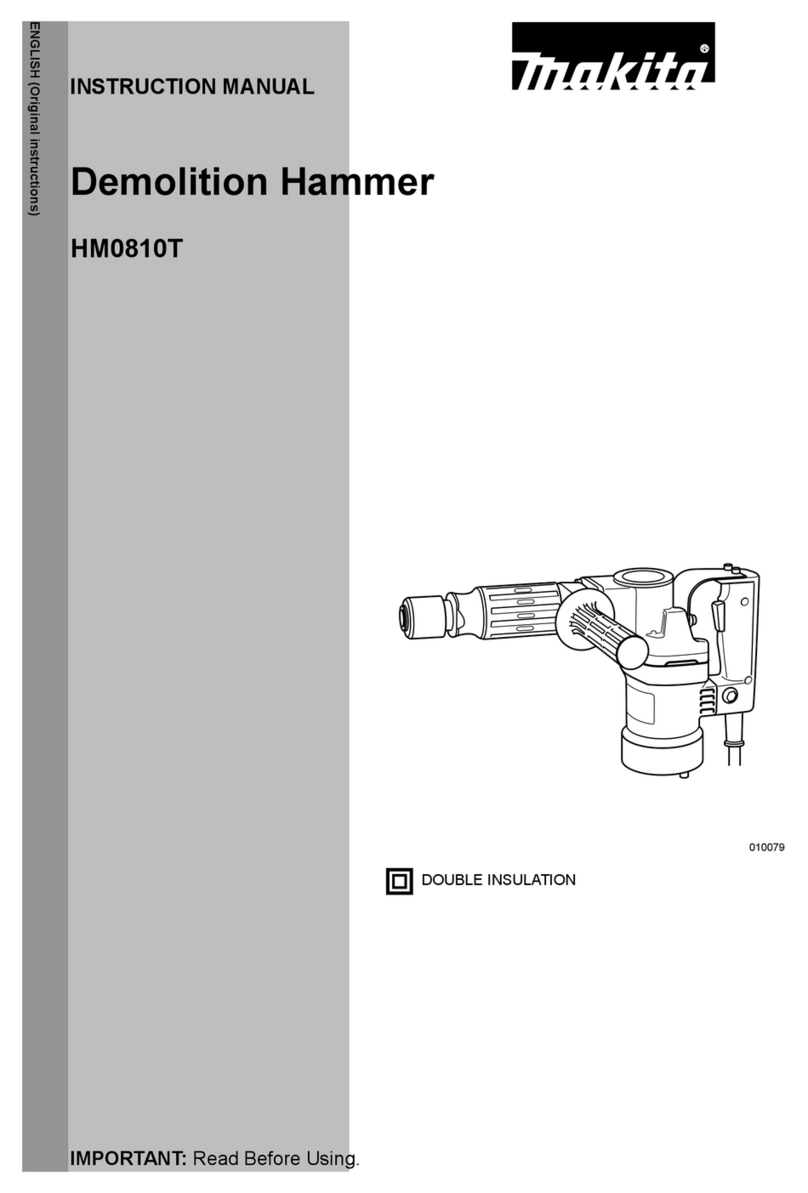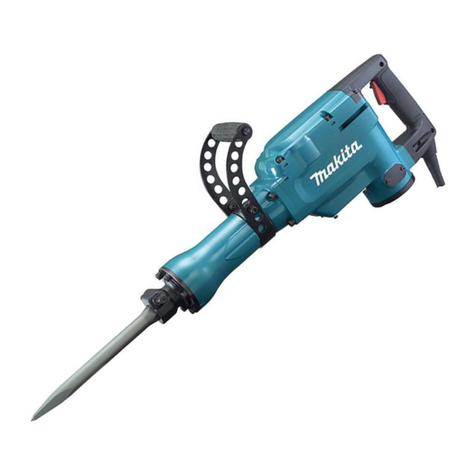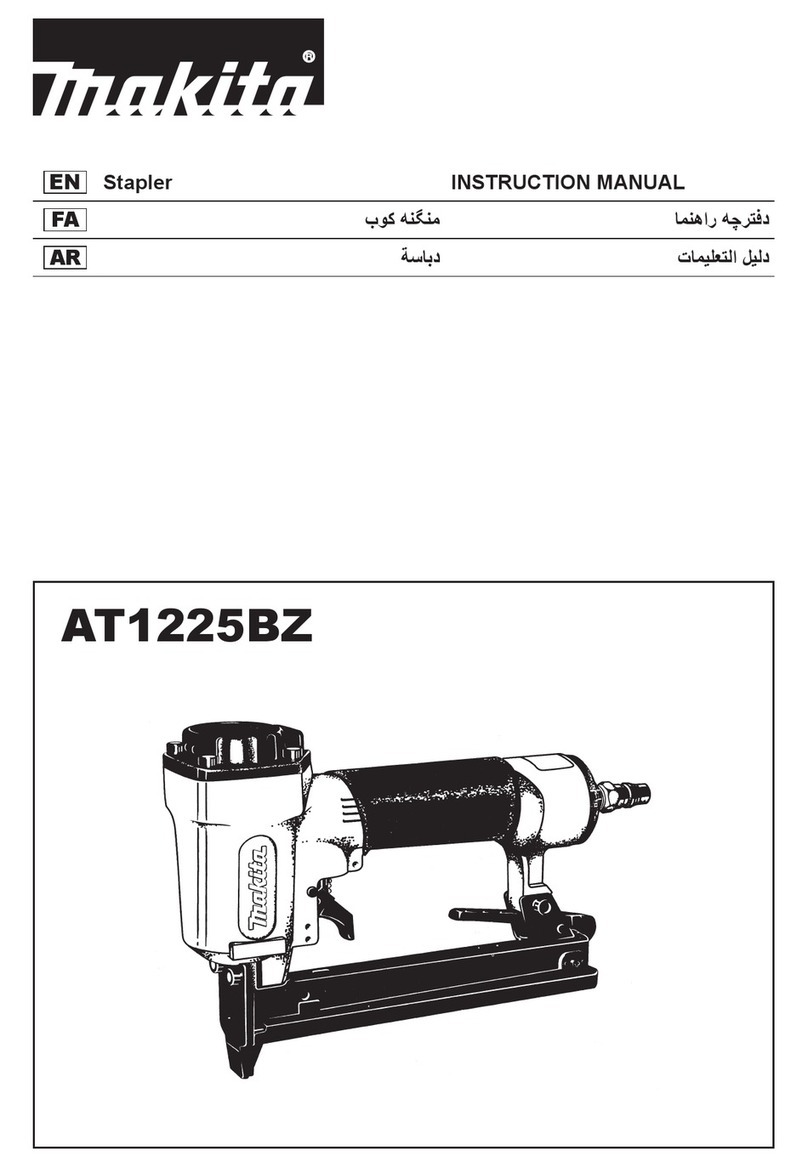
10 ENGLISH
ENGLISH (Original instructions)
SPECIFICATIONS
Model: DTR180
T ie w ire ( O ptional ac c essory ) ø 0.8 mm
D iameter of rebars th at c an be tied F rom # 3 x # 3 to ( # 4 x 2) x ( # 4 x 2)
F rom 1 0 mm x 1 0 mm to ( 1 3 mm x 2) x ( 1 3 mm x 2)
A pprox imate number of ties per reel A pprox imately 1 20 ties
O v erall length 304 mm
R ated v oltage D .C . 1 4 .4 / 1 8 V
Net w eigh t 2.3 - 2.6 kg
Due to our continuing program of research and development, the specications herein are subject to change
w ith out notic e.
Specications and battery cartridge may differ from country to country.
• T h e w eigh t may d if f er d epend ing on th e attac h ment( s) , inc lud ing th e battery c artrid ge. T h e ligh test and h eav i-
est c ombination, ac c ord ing to EP T A -P roc ed ure 01 / 201 4 , are sh ow n in th e table.
Applicable battery cartridge and charger
Battery c artrid ge D .C .1 4 .4 V Mod el BL 1 4 1 5 N / BL 1 4 30 / BL 1 4 30B / BL 1 4 4 0 / BL 1 4 5 0 / BL 1 4 6 0B
D .C .1 8 V Mod el BL 1 8 1 5 N / BL 1 8 20 / BL 1 8 20B / BL 1 8 30 / BL 1 8 30B / BL 1 8 4 0 /
BL 1 8 4 0B / BL 1 8 5 0 / BL 1 8 5 0B / BL 1 8 6 0B
C h arger D C 1 8 R C / D C 1 8 R D / D C 1 8 R E / D C 1 8 S D / D C 1 8 S E / D C 1 8 S F
•
S ome of th e battery c artrid ges and c h argers listed abov e may not be av ailable d epend ing on y our region of resid enc e.
WARNING: Only use the battery cartridges and chargers listed above. U se of any oth er battery c artrid ges
and chargers may cause injury and/or re.
Combination of rebars that can be tied
Combination of 2 rebars
# 3 ( 1 0 mm) # 4 ( 1 3 mm) # 5 ( 1 6 mm)
# 3 ( 1 0 mm)
# 4 ( 1 3 mm)
# 5 ( 1 6 mm)
Combination of 3 rebars
# 3 x # 3 ( 1 0 mm x 1 0 mm) # 4 x # 4 ( 1 3 mm x 1 3 mm)
# 3 ( 1 0 mm)
# 4 ( 1 3 mm)
# 5 ( 1 6 mm) -
Combination of 4 rebars
# 3 x # 3 ( 1 0 mm x 1 0 mm) # 4 x # 4 ( 1 3 mm x 1 3 mm)
# 3 x # 3 ( 1 0 mm x 1 0 mm)
# 4 x # 4 ( 1 3 mm x 1 3 mm)
NOTICE: I f th ere is a gap betw een rebars or if th e tool is used at an inc orrec t orientation, th e rebars may not be
able to be tied .

